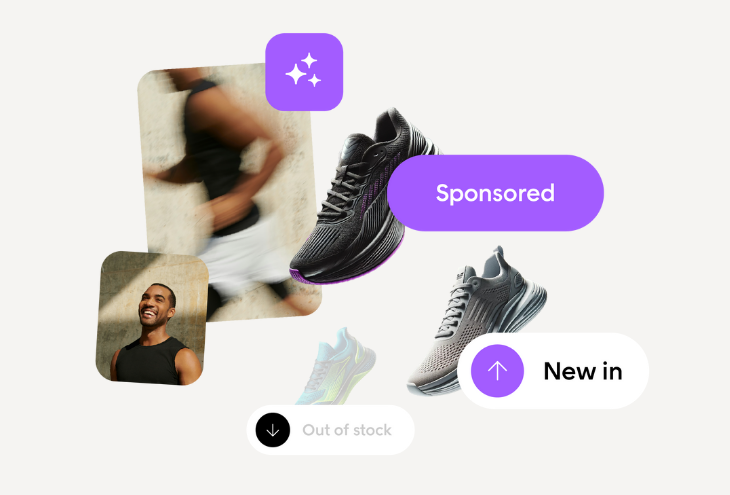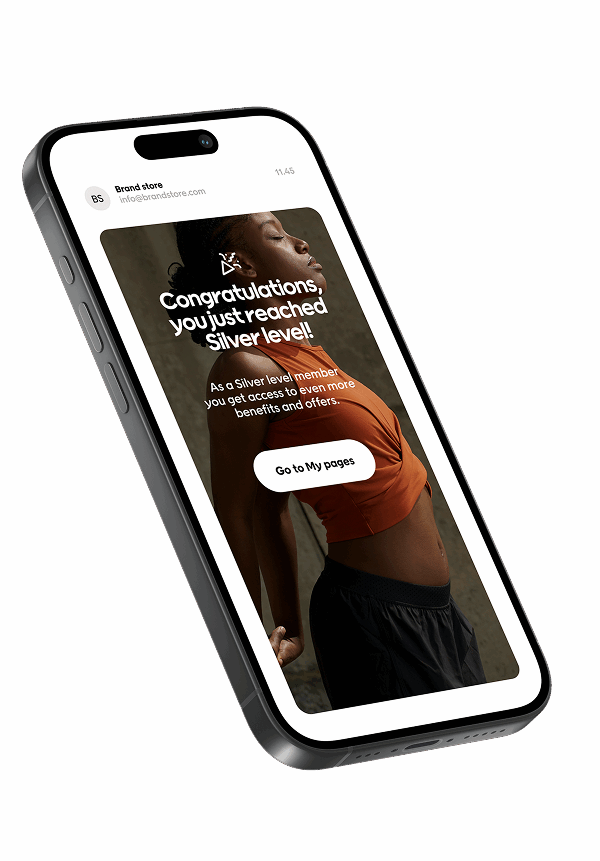Marketing automation in retail: Strategies that boost engagement, sales, and efficiency
Retail moves fast, but manual marketing can really slow you down. You need to replace repetitive tasks, track real-time customer behavior, and deliver personalized customer experience at scale over multiple channels.
That’s why marketing automation in retail is essential to your business.
In this guide, you’ll learn how to:
- Build targeted campaigns across email, SMS, and ecommerce platforms.
- Use real-time data to improve customer engagement and retention.
- Optimize inventory management and reduce labor costs.
- Create an automation strategy that helps your team scale smarter and faster.
Short on time? Here are the main takeaways at a glance:
- Retail marketing automation replaces manual tasks with smart workflows and personalized communication.
- Automation tools help marketing teams launch campaigns, track performance, and drive better results across channels.
- Key benefits include higher customer satisfaction, improved efficiency, and significant cost savings.
- Platforms like Voyado empower retailers to grow faster by turning customer data into action.
Let’s break down exactly how retail marketing automation works—and how it helps you reach the right customer, with the right message, at the right time.
What is retail marketing automation?
Retail marketing automation isn’t just about sending emails; it’s also about achieving operational efficiency. It’s about replacing manual, time-consuming tasks with smart, scalable workflows that drive real results.
Here’s what automation could enable you to do:
- Save time by cutting out repetitive tasks like manual data entry or one-off campaigns. With automation tools, you can create workflows that run in the background, so your team can focus on strategy, not busywork.
- Boost conversions with personalized marketing triggered by real-time customer behavior. Whether it’s an abandoned cart reminder or a birthday discount, automation ensures the right message hits at the right moment.
- Use customer data more effectively to track engagement, build segments, and tailor content to match customer expectations and preferences. This leads to better customer relationships and more repeat purchases.
- Optimize performance by testing and tweaking campaigns based on real-time data. The result? Higher ROI and more effective marketing strategies.
With a retail marketing automation platform like Voyado, brands like yours have seen:
- 27% increase in conversion rates
- 215% more transactions
- 115% higher revenue
”Automation streamlines our work and the communication with our members and provides a greater value from our invested time.”
– Amir Mofidi, E-commerce Director at LAGERHAUS AB
So, what does all of this look like in practice?
Let’s walk through some of the most effective automation workflows used by retail marketing teams and how they help you deliver the right message at precisely the right moment.
Popular automation workflows for retail marketing
Not sure where to start? Start with the high-impact automation flows that address real problems in the retail sector, like abandoned carts, out-of-stock notifications, and post-purchase follow-ups.
Here are some of the most effective retail marketing automation workflows our customers use:
Welcome series
Automate the first touchpoint with new subscribers. A well-timed welcome email (or SMS) sets the tone, introduces your brand, and builds customer engagement from day one.
Abandoned cart recovery
One of the highest-converting automation flows. Automatically remind customers about items they’ve left behind—and offer incentives to complete their purchase.
Product follow-up and review requests
After a customer makes a purchase, follow up with relevant product recommendations or invite them to leave a review. This improves customer retention and supports future marketing campaigns.
Customer re-engagement
Use automation software to win back inactive customers with timely offers based on past behavior or segments like “at risk of churn.”
Back-in-stock alerts
Retailers using automated inventory systems can trigger real-time notifications when popular products are available again, turning customer demand into quick conversions.
Personalized product recommendations
Use customer behavior tracking to suggest relevant items based on previous purchases or browsing activity. This creates a more personalized shopping experience and drives upsells.
Membership or loyalty flows
Strengthen customer relationships by rewarding loyalty milestones or providing exclusive offers through automated emails or direct mail.
Children’s clothing brand, Polarn O. Pyret, advises:
“Instead of building many small automations that connect, try to get the whole journey into one flow. By setting up comprehensive automations, you will see how each step contributes to the flow, and it will be easier to follow up on the result.”
💡Need to get up and running faster? Be sure to download our Marketing Automation Toolkit with six free marketing automation templates.
Now you’re ready to build your first automation or improve the ones you already have.
But great automation doesn’t happen by accident. Here’s how to design a retail automation strategy that drives results:
How to design a retail automation strategy that drives results
Before you jump into automation software and workflows, it’s worth taking a step back. The most effective retail marketing automation strategies are rooted in clear goals, smart segmentation, and a sharp understanding of your customer journey.
Here are seven steps to get started:
1. Define your purpose
What do you want to achieve? Is your goal to boost conversions, increase customer retention, reduce manual tasks, or all of the above? Get specific so you can measure impact later.
2. Choose your success metrics
What does success look like? That might be email open rates, completed purchases, return visits, or a lift in average order value. Align KPIs with your business goals and track them from day one.
3. Identify your triggers
Think about what actions or behaviors should kick off your automation. Common triggers include sign-ups, first purchases, product views, or inactivity. The more relevant your trigger, the more effective your automation.
According to premium fashion brand By Malene Birger, labeling customers as “bargain hunters,” “high CLV,” or “at risk of churn” helps you prioritize communication and tailor campaigns that speak to each segment.
4. Map the timing
When should the first message go out? Immediately? A day later? Consider the customer’s expectations and how you can strike the right balance between helpful and overbearing.
5. Pick your channels
Where does the interaction happen—email, SMS, push notifications, social ads? Automation across multiple channels increases your chances of engaging the customer where they actually are.
6. Create your content
The best content feels timely and personal. Whether it’s a simple welcome message, a loyalty reward, or a product recommendation, make it easy to read, relevant to the moment, and aligned with your brand.
7. Don’t skip the follow-up
Set checkpoints to review performance, tweak your messaging, and build on what works. Automation doesn’t mean “set it and forget it”. It means learning what clicks and optimizing over time.
DIY brand Panduro said it best:
“Learn from what works and what doesn’t when it comes to copy, content, and offers—then take what’s best and make it part of the automated communication.”
Of course, making those improvements consistently takes more than good intentions. It takes the proper infrastructure and the right tools.
Bringing it all together with Voyado
If you’ve made it this far, you know that great automation takes strategy, structure, and the right tools. And that’s precisely where Voyado fits in.
We’ve built our platform around what retail marketing teams need:
Tools that connect customer data, trigger the right actions, and scale across channels without extra complexity.
From welcome series to loyalty flows, back-in-stock alerts to personalized product recommendations, Voyado helps you build, test, and optimize automations in one place without relying on IT or separate systems.
Whether you’re just getting started or refining advanced workflows, Voyado supports your strategy at every stage.
👉 Curious what that could look like for your brand? Book a demo and let’s talk through your goals.
The strategies we’ve covered so far are already delivering results for today’s leading retailers. But automation doesn’t stop evolving—and staying ahead means keeping an eye on what’s next.
Key trends shaping the future of marketing automation in retail
As automation becomes more advanced and accessible, the retail industry is evolving fast. From global chains to niche ecommerce brands, retailers are adopting new tools and strategies to stay competitive and meet rising customer expectations.
Here are some of the most impactful trends transforming retail marketing automation today:
- Smarter use of customer data
Retailers are no longer just collecting data; they’re using it to drive personalized marketing and create automated workflows that respond to real-time customer behavior. Customer behavior tracking and segmentation are now core components of every successful automation strategy.
- Expansion of automation technologies
Modern automation tools now include everything from robotic process automation to automated inventory systems, helping retailers reduce manual data entry, optimize performance, and improve operational efficiency across departments, not just in marketing.
- Growth of omnichannel automation
Today’s retail marketing campaigns must run across multiple channels. This covers everything from email marketing automation and social media posts to direct mail and SMS. Automation enables retailers to deliver a consistent, personalized shopping experience across the entire customer journey.
- AI-powered personalization
Automation software is getting smarter, helping marketing teams generate personalized product recommendations, automate content based on customer demand, and predict future buying behavior. This shift is driving a superior customer experience and stronger customer relationships.
- The rise of self-service retail
In-store self-checkout systems and app-based shopping journeys are becoming the norm. Automation technologies are central to this shift, helping retailers streamline retail operations, reduce labor costs, and improve customer satisfaction.
- Business impact becomes the priority
It’s not just about saving time anymore. Retailers are using marketing automation platforms to drive business growth, improve sales forecasting, and achieve significant cost savings. Automation empowers businesses to connect marketing efforts directly to ROI.
As the global retail automation market continues to grow, the brands that succeed will be those that embrace automation not just as a tool, but as a strategy woven into every part of their retail processes.
 Voyado Engage
Voyado Engage  Voyado Elevate
Voyado Elevate  Powered by Bonnie AI
Powered by Bonnie AI 











